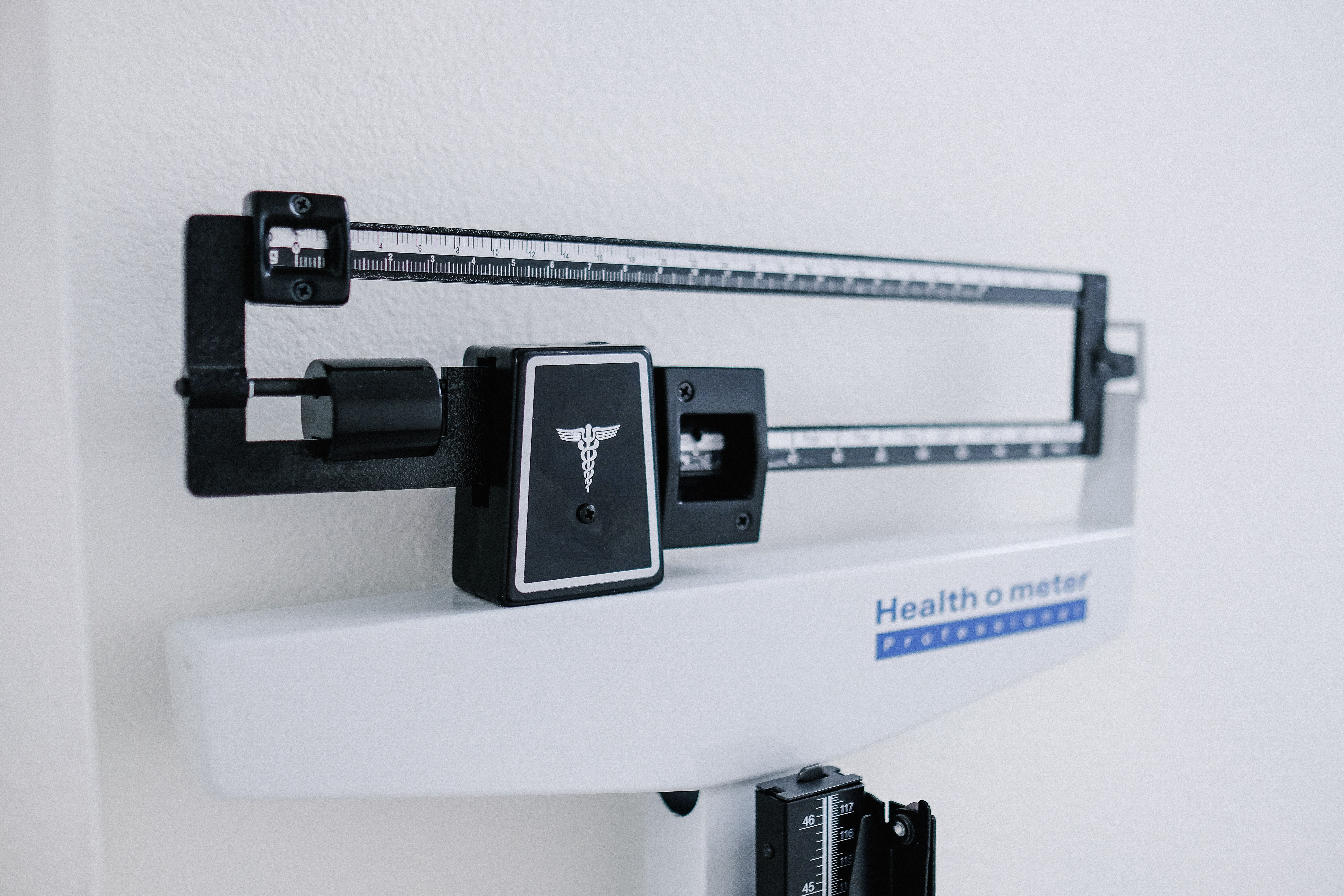Updated May 6, 2022
With obesity affecting over 35% of adults in the United States, the topic of body fat measurement has never been more apparent. However, the methodology for evaluating body fat is mainly flawed, especially as it relates to the Body Mass Index (BMI).
Body Mass Index (BMI) is the outdated yet still popular approach of determining body fat based on weight and height. Due to this outdated method, recent studies show that many people often end up mislabeled as “unhealthy.” Similarly, body fat calculators use formulas that leave room for many errors and false reports.
These one-size-fits-all approaches result in a single number that will not accurately evaluate your client’s overall health status. Instead, these methods look at broad, general trends across large groups of people that reveal an average result. Because they are not catered to individual needs, this methodology will produce an inefficient assessment for your clients.
Many people take the BMI number at face value without understanding its meaning. This article will explore some of the truths and myths about BMI and why it does not work as an accurate measure of someone's fitness level or health risks.
What Is BMI?
BMI is a measure of body fat based on height and weight. BMI is calculated by dividing an individual’s weight in kilograms by the square of the individual’s height in meters (kg/m2). For example, if you weigh 150 pounds and are 5 feet 8 inches tall, your BMI is 24.8 (150/4*4 = 24.8).
BMI does not account for influential factors, like muscle mass or bone density. Nor does it account for the distribution of fat on someone's body, which can be a more accurate measure of their health risks than BMI alone.
Does BMI Measure Health?
Many people use BMI to measure someone's health or fitness levels quickly, but it is not accurate.
BMI does not account for many different factors that affect one's health and fitness, such as muscle mass and body fat percentage. The metric also doesn't factor in height or weight fluctuation over time.
A person who has been training consistently for years and added lean muscle mass may have a higher BMI even though they're in better shape than someone with the "ideal" weight.
The other issue with BMI is that it can be misleading to naturally muscular people. For example, a woman who trains frequently and has very little body fat might have a high number because she has more muscle tissue than another woman of the same height and weight.
Furthermore, the calculations for BMI don't consider any other factors that can impact your health. For example, some people may have high blood pressure or high cholesterol, which could contribute to a person's health by having risks of cardiovascular problems despite appearing healthy based on their BMI measurement alone.
Reasons Why BMI Isn’t Accurate
1. The BMI formula doesn’t make much sense.
Body mass index computes body fat based on height and weight. However, scientifically, these results don’t add up. It requires squaring your client’s height and even excludes waist size, which doesn't make any scientific sense for measuring body fat.
2. The logic behind BMI is inherently flawed.
The BMI divides all people into four categories and numbers. Because key factors are omitted from this approach, your client may be healthy, strong, and athletic but miscategorized. Even some football players have been deemed “obese” by these standards.
3. BMI was originally meant to measure overall trends in large groups of people.
Created by a mathematician in the early 19th century, the creator of the BMI originally intended for it to gauge general trends in a large population, not on an individual basis.
4. It leaves out key factors.
BMI doesn't reveal much about the actual composition of your body, such as how much fat versus muscle you have and bone density.
5. It doesn't indicate anything about your activity level.
The BMI formula doesn’t consider the day-to-day and athletic activity levels that clients have, which is a critical context that ends up being omitted.
6. Neither BMI or body fat calculators show where problem areas in the body are.
They don't tell your client anything about their body shape (i.e., apple or pear). Where fat is located on the body is an essential point of dialogue with your clients when determining health and potential issues. The distribution of body fat is a critical predictor for evaluating their health.
7. They fail to provide a path forward.
Without considering the distribution of body fat, activity level, and other factors above, results from BMI and body fat calculators are inaccurate when measuring clients’ fitness benchmarks to see if their health and fitness routine is improving their health.
8. As professionals, it provides a limited perspective.
Reliance on the quick convenience of BMI or a body fat calculator by doctors and health professionals discourages them from pursuing more accurate methods for evaluating obesity levels. This does not prioritize the well-being of their clients.
9. It doesn't consider body composition.
The concept of BMI is simple, but it doesn't consider how much muscle someone has. Someone could have a low body fat percentage, strong muscle mass, and a high BMI score. BMI also does not measure body fat percentage. So, a person who is considered "overweight" or "obese" based on their BMI score may not have excess body fat.
10. It doesn't account for different weight fluctuations.
BMI does not account for the weight fluctuations with age, pregnancy, and exercise.
This is a serious problem when doctors rely solely on BMI to measure health risks. Studies have found that people can be healthy at a higher BMI level if they maintain their weight throughout the aging process.
That's because muscle weighs more than fat, and as you get older, your muscle mass decreases. When it comes to pregnancy, more weight gain usually means more weight lost after delivery, so a pregnant woman may have an elevated BMI but have a healthy body composition.
And finally, people who exercise regularly are typically leaner than those who don't exercise at all, which may result in an inaccurate reading of their body composition on a BMI chart.
11. It doesn't accurately measure health risks.
One myth about BMI is that it accurately measures health risks. Studies show that BMI does not measure the number of calories burned during exercise or a person's fitness level.
The metric only calculates someone's body weight in relation to their height, which means someone who does not exercise would be considered more healthy than an athlete based on their BMI score.
A person could work out for five hours per week and have a higher BMI than someone who doesn't exercise because they may have more muscle mass. The problem with this system is that people can have different body types and tones and still be healthy while at a high BMI.
It's also important to note that the volume of muscle tissue varies from person to person, so BMI can't measure it. This is why some experts believe body fat percentage should be used instead.
Having the Right Tools
Measuring body fat is critical for success. However, it’s important to use the right approach to evaluate where your client stands and how to help them improve. Fat mass and muscle mass must be distinguished to get your clients on the right track to optimal health.
Some gyms and health clubs assume the best they can get is with a DEXA scan or a dunk tank. Just because the financial investment is higher doesn’t mean that you’re paying for accuracy!
More and more, these entities throughout the country are discovering the power of 3D body scanning, which provides the best means of measuring body fat percentage for clients.
With visualization tools and advanced software features, 3D body scanning is the best approach for measuring body fat that puts your clients on the path to optimal health.
Debunking The Myths
There are many myths about BMI, but the most common is that it is accurate to measure someone's fitness level or health risks.
This myth may come from the fact that BMI is a simple metric to calculate and it’s easy to understand.
Some experts believe that using the BMI as a health risk predictor can be harmful because people may falsely think they are in good shape when they are actually at risk of serious diseases.
One example of how this becomes a problem can be seen with athletes who have a high muscle mass and, therefore, high BMI. The athlete could be considered overweight or even obese based on their BMI but still have a healthy body composition.
Another myth is that BMI is an indicator of health risks. This is only true to some extent. Cardiovascular disease, diabetes, and high blood pressure are just some of the health outcomes associated with being overweight or obese. But BMI is not a perfect measure of these risks. Another issue with the use of BMI for measuring health risks is that it does not distinguish between weight gain due to fat versus weight gain due to muscle tissue.
Let's say you're a person who has gained 20 pounds of primary muscle over time because you've been working out consistently—your BMI might not change much, or it may even decrease!
Another myth is that BMI is the same in males and females. We don't need to adjust the measurement at all, but when you compare men and women of the same height and weight, they will have different BMIs because of their different muscle compositions. BMI also does not consider age and sex. Men typically have more muscle than women, so their higher BMIs may reflect more muscle (not necessarily more fat).
The Truth Behind BMI
In general, BMI is a good way to measure weight in populations. But when it comes to individual people, it has many flaws.
For starters, BMI doesn't consider body composition—that is, the ratio of muscle to fat. Muscle weighs more than fat, so two people could have the same height and weight but different body compositions.
One person may be healthy with mostly muscle mass and lower fat levels, while the other individual may have an unhealthy amount of fat with little or no muscle mass.
BMI also does not account for age and gender. Men typically carry more muscle than women at the same height and weight level. And as we grow older, our ratio of muscle to fat changes as well.
Lastly, BMI can't tell you anything about where your body fat is located on your body—whether it's around your belly or thighs or around your chest or butt.
This isn't a problem if you're trying to estimate obesity rates in a population group based on height and weight information; it makes BMI unreliable for individuals attempting to assess their health risks and fitness level.
Assumptions Of BMI
The most common criticism of BMI is that it does not consider a person's muscle mass. The metric only considers height and weight, meaning someone who has more muscle will have a high BMI number, even if they are not overweight.
Another assumption of BMI is that the ratio scales according to ethnicity. This is not always the case as people from different ethnicities have different body shapes and ratios.
For example, some people of East Asian descent may have a high BMI because they have thicker builds and shorter heights, while people of African American descent may have lower BMIs because they have longer limbs and thinner builds.
Health behaviors and outcomes are also not determined by BMI alone. Someone considered "overweight" or "obese" may have healthy blood pressure, cholesterol levels, and triglyceride levels.
Takeaway
BMI is a flawed metric that does not consider body composition, age, or muscle weight. This can lead people with a high BMI to get the wrong impression about their health and fitness level.
Some of the most important factors that BMI does not take into account are:
A Person's Age
With age comes changes in muscle mass and bone density, affecting one's BMI reading.
Muscle Weight Versus Fat Weight
Muscle weighs more than fat, so someone with more muscles will have a higher BMI reading than someone who is overweight but has less muscle tissue.
Height
A taller individual will typically have a higher BMI because height correlates to weight.
BMI is not a perfect measure of fitness level or health risks. There are other ways to measure your progress towards a healthier lifestyle without using the flawed metric of BMI. You could use waist circumference or body fat percentage to understand your fitness level and health risks better.
An individual's weight should not be compared to their height to determine whether they are overweight or underweight. A person's BMI can be inaccurate because it does not consider a person's age, muscle weight versus fat weight, or height.





